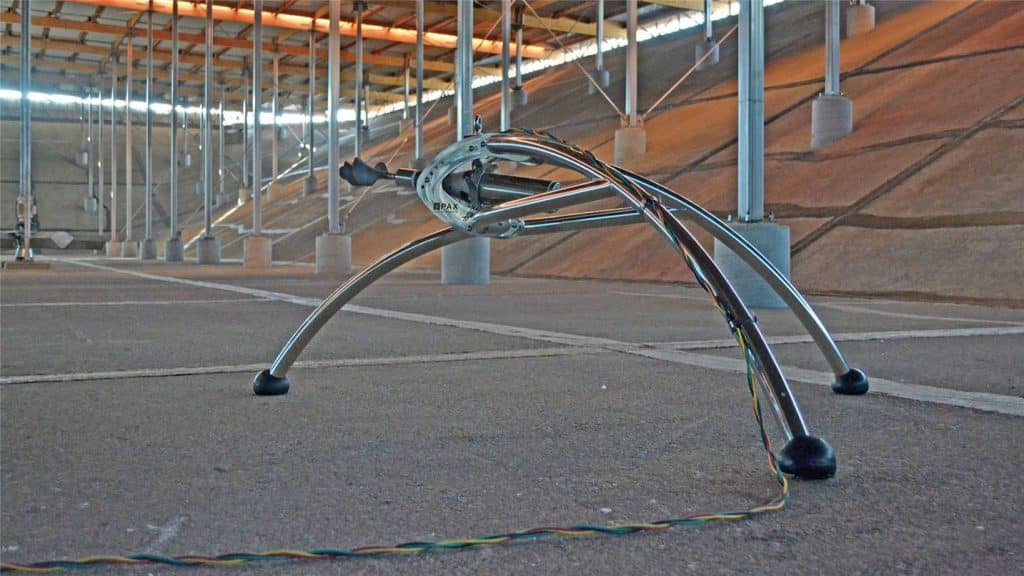Project Summary
Customer
Pinellas County, FL

Type of Project
Active Mixing in 5 MG Concrete Tank
Results
- Active mixing system (even operating at 50% of its total power rating) provided sufficient mixing power to maintain fully-mixed conditions in a 5 MG storage tank, eliminating both thermal and chemical stratification
Pinellas County, Florida is typical of many major metropolitan water systems, with over 700,000 customers, 2,000 miles of piping and several large water storage facilities. At one point, Pinellas County Department of Environment and Infrastructure (DEI) saw a decline in water usage, both due to active water conservation programs and downturns in the regional economy. This decrease in water usage increased water age, and coupled with warm southern temperatures, increased incidences of nitrification in parts of their chloraminated system.
As a result, Pinellas County DEI embarked on a major upgrade in anticipation of their conversion to chloramines as a secondary disinfectant and installed passive mixing systems in each of their ground-level water storage tanks. But following the conversion, DEI found that nitrification was still an issue in some of their storage tanks. To reduce nitrifying bacteria and biofilm growth, DEI performed a chlorine maintenance (or free chlorine burn) each spring in which the secondary disinfectant was switched from chloramines to free chlorine for several weeks. DEI also increased flushing, averaging roughly 255 million gallons of water per year.
But in just a few years, Pinellas County DEI experienced its earliest recurrence of nitrification after chlorine maintenance in one of its communities. Despite the presence of passive mixing systems in their tanks, operators at DEI were aware that mixing conditions were not optimal. One indication: as tanks were drained, operators saw a steady drop of chlorine levels, suggesting that the upper layers of water in the tanks were depleted of disinfectant residual.
“These storage tanks were designed to be full,” explained Royce Rarick, Senior Water Plant Operator at Pinellas County DEI. “We would watch the residual drop as the tank was pumped out.” The variations in chlorine levels and episodes of nitrification strongly suggested that the existing mixing systems were unable to maintain homogeneous water chemistry.
Solution: mixing it up
DEI engaged Jones Edmunds & Associates, Inc., a consulting & engineering services firm, to study their distribution system and propose infrastructure and operational improvements to reduce the risk of nitrification and the need for large bulk water turnover by flushing. The firm recommended the use of active mixers to improve mixing in the storage tanks and contacted USG Water Solutions (USG) to set up a demonstration test using a PAX Water Mixer. Unlike passive mixing systems, which only introduce momentum into the tank during the fill cycle, PAX active mixing systems operate 24/7, creating a powerful flow pattern within the tank and ensuring uniform distribution of disinfectant residual.
To confirm that active mixing would be sufficient to overcome the chemical stratification inside the tanks, Pinellas County DEI conducted a performance trial in which temperature and residual would be monitored in two 5 MG tanks: one outfitted with a PAX Water Mixer and the other, left as a control.

Results
The temperature data showed only slight differences in thermal stratification between the control tank and the actively mixed tank. It was the chlorine residual data that told the real story.
In the control tank, residual chlorine quickly became stratified, with levels 0.5 to 0.9 ppm lower at the top of the tank compared to the bottom. However, in the actively mixed tank, chlorine residual levels were within 0.1 ppm of each other. The data revealed that while thermal conditions remained relatively uniform, significant chemical stratification quickly developed. The active mixer was able to restore homogeneous chlorine distribution throughout the tank.
In summary, findings showed that significant chemical stratification can exist inside water tanks that show little or no thermal stratification, but the active mixing system installed in the 5 MG tank was able to eliminate the chemical stratification even with the worst-case inlet/outlet conditions.
“The most impressive part is that even at 50% of the mixer’s total power rating, it still provided great performance,” Chris Baggett, Senior Engineer at Jones Edmunds.
Pinellas County DEI subsequently installed PAX Water Mixers in eight of their tanks and lowered operational levels in some of the water storage tanks to reduce water age. Additionally, pressures were adjusted in some parts of the distribution system to improve flows. Managers also added a second chlorine maintenance event at the end of the warm season, and, in one area, a water storage tank was taken offline. As a result, Pinellas County DEI saw a substantial reduction in their monthly flushing rates – more than a 50% decrease – during the first half of the year.

“
Between the combination of mixers going in and running the tanks lower, we are definitely maintaining better residuals than in the past, and we are flushing less than we had been.
— Royce Rarick, Senior Water Plant Operator, Pinellas County DEI
